Interested in helping with a community I manage? Interact with posts.
Mantra: “We should focus our actions, time, and resources on Direct Action, Mutual Aid, and Community Outreach… No War but Class War!”
FYI: Human, check reCAPTCHA log /s
- 68 Posts
- 102 Comments

 7710·11 days ago
7710·11 days agoOh, I see the problem.
It’s Windows 10.
Third building wasn’t insured, that is why it is not mentioned.
Reported.
- No Spam
-Do not spam posts with intent to harass, annoy, bully, advertise, scam or harm this community.
-No posting Scams/Advertisements/Phishing Links/IP Grabbers
Oh, thanks for the link!
Edit: added a bit of information below for those interested
A/B testing (also known as split testing or bucket testing) is a methodology for comparing two versions of a webpage or app against each other to determine which one performs better. A/B testing is essentially an experiment where two or more variants of a page are shown to users at random, and statistical analysis is used to determine which variation performs better for a given conversion goal
In an A/B test, you take a webpage or app screen and modify it to create a second version of the same page. This change can be as simple as a single headline, button or be a complete redesign of the page. Then, half of your traffic is shown the original version of the page (known as control or A) and half are shown the modified version of the page (the variation or B).
The following is an A/B testing framework you can use to start running tests:
- Collect data:
- Identify goals:
- Generate test hypothesis:
- Create different variations:
- Run experiment:
- Wait for the test results:
- Analyze results:
You don’t see a star or bookmark symbol on comments?
Might be app you are using?
They are always testing changes to different groups of people.
Not too sure how that works, but if you wnat the old layout you can add extensions.
Quick search results in:
How to Undo YouTube’s Terrible New Layout [Jake Peterson | May 23 2024 | LifeHacker] https://lifehacker.com/tech/how-to-undo-youtubes-terrible-new-layout
How to Get Old YouTube Layout Back: Simple Steps for Nostalgic Navigation [July 18, 2024 | bytebitebit] https://bytebitebit.com/tips-tricks/how-to-get-old-youtube-layout-back/
Yes, only Mambo #5 has been found, originally in Cuba though.
Then it was found again in Germany by Lou Bega.
Let us keep searching!

 33·1 month ago
33·1 month agoNo song, to my knowledge, would cause me to harm myself.
My actions would have caused this to happen so much so that Baba Yaga [1] himself had to enact justice with a pencil [2].
Source:
- https://screenrant.com/john-wick-baba-yaga-real-meaning-boogeyman-explained/
- [Explicit] John Wick Chapter 2 (2017) - Pencil Kill Scene [00:44 | AUG 29 2017 | Menetro] https://www.youtube.com/watch?v=mlb8bSQzSxg

 23·1 month ago
23·1 month agoIt seems they can.
Like all of Elon’s companies, they will be overworked, and they will love it.
Hopefully, they will learn to unionize at some point.
Attempt:
*A note has been noted.
For posting about noticing that we noticed that you noticed what this sign is alerting others to notice.
Thanks for sparing our hearts!
<3

 72·1 month ago
72·1 month agoThe government needs to know who to tax and take out (on a date) if necessary.

 41·1 month ago
41·1 month agoPixel is a popular choice with peeps!
Any information you would like to share with us on why you went with Graphene vs. others?
Any quick pros and cons you would like to share?

 62·1 month ago
62·1 month agoHere is the supported device lis fot those lookingt:
Devices
Devices with a lower opacity image are no longer officially supported and the pages exist for reference only.
You can show them by disabling “Hide discontinued devices” in the device filters below:

 14·1 month ago
14·1 month agoThanks for posting!

 53·2 months ago
53·2 months agoPinned comment:
Comment by @Red-fr3ix:
If buying isn’t owning, pirating isn’t stealing. I sent an email to Adobe customer support letting them know that I’m changing the TOS and allowing myself to own all of their software at no cost. By accepting my email, they’ve agreed to the TOS, and in order to file a dispute, they need to send a certified letter weighing exactly 1.337oz and sealed with wax the exact color of my asshole. Failure to do so constitutes acceptance of my new TOS.

Summary
- The speaker discusses a recent blog post released by a company that they believe is manipulative and unethical.
- They share their experiences dealing with politicians, lobbyists, and PR for the right to repair movement, providing insight into ethical crisis management.
- The company in question, Adobe, updated its terms of service without providing an opt-out or disagree button, forcing users to agree before accessing their content.
- The speaker criticizes this approach, likening it to a “rapist mentality.”
- They mention how automakers accuse independent repair technicians of being rapists while selling user data themselves.
- The speaker urges viewers to be cautious of blindly trusting YouTubers and always demand primary sources and proof before believing information.
- They highlight specific problematic language in Adobe’s terms of service that allows the company to access and analyze user content without explicit consent.
- The video transcript discusses Adobe’s attempt to reassure customers and solidify trust without addressing specific concerns that upset customers.
- Adobe uses crisis communication tactics, combining weak and strong statements to shape public perception.
- It also highlights how Adobe is not providing concrete details or actions to address customer concerns, leading to skepticism about their intentions.
- The transcript also criticizes Adobe for not providing a clear opt-out option for certain product improvements, likening their approach to a “rapist mentality” for coercing users to agree to terms without a clear alternative.
- The speaker discusses how companies like Adobe use manipulative communication tactics to deceive customers.
- They emphasize the importance of recognizing these tactics, such as using crisis communications to manipulate consent.
- The speaker emphasizes that customers should not be underestimated and should be aware of being misled.
- They use personal experiences to illustrate the point, urging viewers to be vigilant and not fall for deceptive practices.

 13·2 months ago
13·2 months agoPinned comment:
Comment by @citizen-abc-123:
“Welcome to today’s episode on how you’re getting F’d… I’m your host, Louis Rossmann.”
Gold!

Summary
- The speaker, Louis Rossmann, discusses design flaws in Apple products and other devices based on his 15 years of experience working on them.
- He highlights a specific design flaw in an Apple device where two pins that should be far apart are placed next to each other, causing issues.
- Moving on to GoPro, he expresses bias against the company due to his negative experiences with their products, specifically a GoPro camera that constantly crashed and had features that didn’t work as advertised.
- He criticizes GoPro for advertising their cameras as waterproof up to 33ft but not covering water damage in their warranty, leading to misleading customers.
- He references a detailed overview by Rich with Tech, explaining a design flaw in the GoPro camera related to gasket compression, which can lead to water leakage and damage.
- The speaker criticizes GoPro for falsely advertising their camera as waterproof.
- They demonstrate how the design flaw in the camera’s battery compartment prevents a proper seal from forming, making it susceptible to water damage.
- The speaker also points out the use of inferior screws that can lead to rust and further compromise the camera’s waterproofing.
- They compare GoPro’s lack of accountability for design flaws to Apple’s history of similar behavior with their products.
- The speaker advises against purchasing GoPro cameras due to their disregard for customer concerns and failure to address known issues.
- They highlight the importance of holding companies accountable for flawed products to prevent such behavior from spreading in the industry.
- The speaker criticizes consumer protection agencies for giving minimal punishments to companies, allowing them to continue making money despite releasing faulty products.
- They specifically mention the poor quality of GoPro cameras compared to cheaper alternatives.
- The speaker recommends trying other brands of action cameras that respect consumers more.
- They share a personal anecdote about their mother engaging in unethical behavior with a lifetime warranty at Toys R Us.
- The speaker emphasizes the importance of understanding and avoiding immoral and unethical actions in life.
- They discuss unethical behavior, emphasizing that two wrongs don’t make a right.
- They recount chastising their mother for participating in immoral actions at a store.
- The speaker warns against retaliating against companies for unethical practices, as it can harm innocent parties like manufacturers.
- They share personal experiences of ceasing to sell products that were frequently returned to uphold ethical standards.
- The speaker urges viewers to avoid unethical actions and unsubscribe if they engage in such behavior.

 33·2 months ago
33·2 months agoPinned comment:
Comment by @SJ-oxy:
Adobe is betting everyone will be too lazy to learn a new tool. And they’re mostly right.
Reply by Louis, @rossmanngroup:
Sad but true. A quick look upon Twitter shows they even among professionals, people are constantly complaining about this piece of garbage crashing all the time. They know way more about video editing and building computers than I do and they complain about this crashing all the time.
The cool thing about DaVinci Resolve is not just the fact that it is the only video editor on Linux that has audio plugins that are not garbage, even though it does not allow me to import my own LV2 or LADSPA plugins. The cool thing is that it is never crashed on me in four years of use. It has never, not once, crashed on me in four years of use. Linux or Windows. Sony Vegas crashes every time you look at it. Adobe Premiere seems to crash all the time for the people that use it to edit video. Da Vinci Resolve is just beautiful.
I would actually sponsor them or have them as a sponsor in all of my videos if I Had a “brand safe” channel that actually got offered sponsorships to things. but I will sing their praises for free here.
Making a video editor that doesn’t crash is one thing. Making it intuitive with good built-in plugins is another. But having something that actually fucking works on Linux and supporting it is amazing. Lots of people bitch that they only support rocky Linux. I do not give a fuck. What distribution of Linux does Sony vegas support? What version of Linux does Adobe premiere support? Exactly.
Da Vinci Resolve works on Windows, Mac OS, Slackware Linux, DB and Linux, Ubuntu Linux, Arch Linux. It’s just beautiful. The Arch wiki even as a guide on how you can make a work with Intel graphics which works normally on Windows and Mac, but does not work on Linux because of some nonsensical reason. That’s why I had to switch from my framework laptop back to my ThinkPad. I added choice between using my framework with Windows because it only had Intel graphics from my ThinkPad from 2017 with Linux because that ThinkPad has Nvidia graphics. But now I can use the venture resolve on Linux with my Intel graphics and it works great, not a single crash ever.
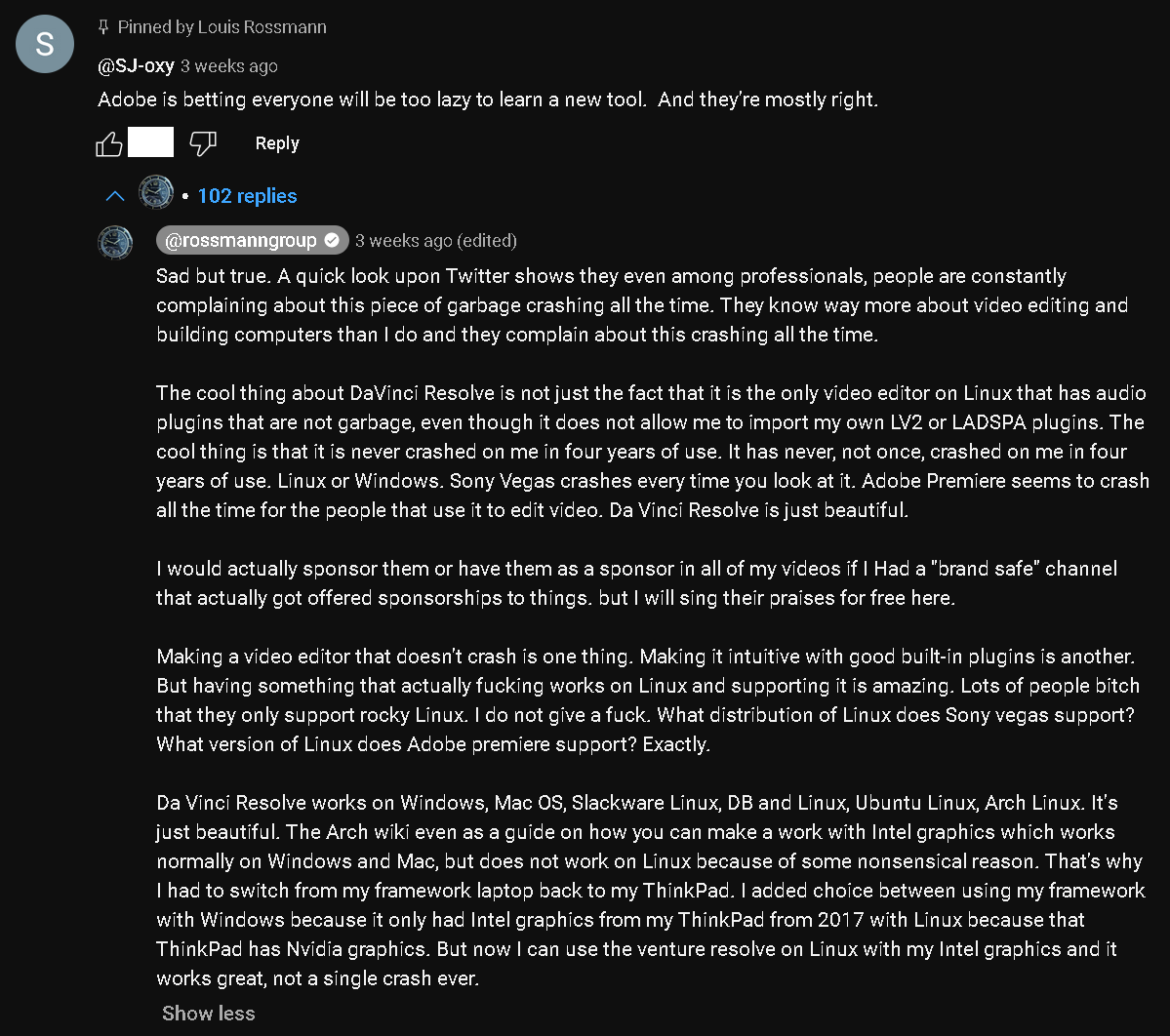
Summary
- The video discusses the shift in Adobe software from being able to run on individual computers to now requiring a connection to the cloud.
- This change means that users’ data can be held hostage and terms can be altered at any time.
- Adobe’s updated terms of use allow them to access and analyze user content through automated methods to improve their services.
- The video host expresses concerns about the invasion of privacy and lack of control over personal data when using cloud-based software.
- The host advocates for finding alternatives to closed-source cloud software and emphasizes the importance of maintaining control over personal data and content.
- The speaker expresses frustration about software companies accessing personal data without consent and using it to create competing products.
- They emphasize the importance of owning and protecting personal data, advocating for alternatives to companies that prioritize profit over privacy.
- The message is to stand up for privacy rights and choose products that respect user data.
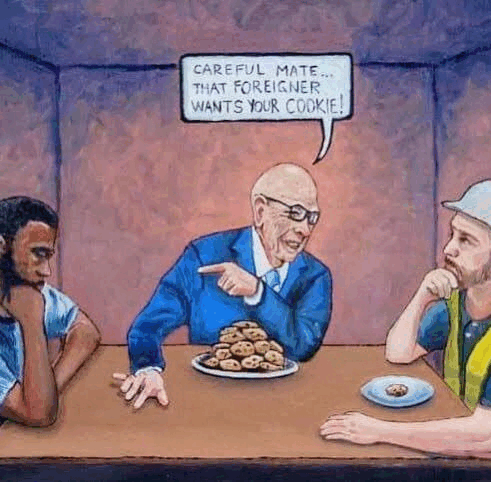

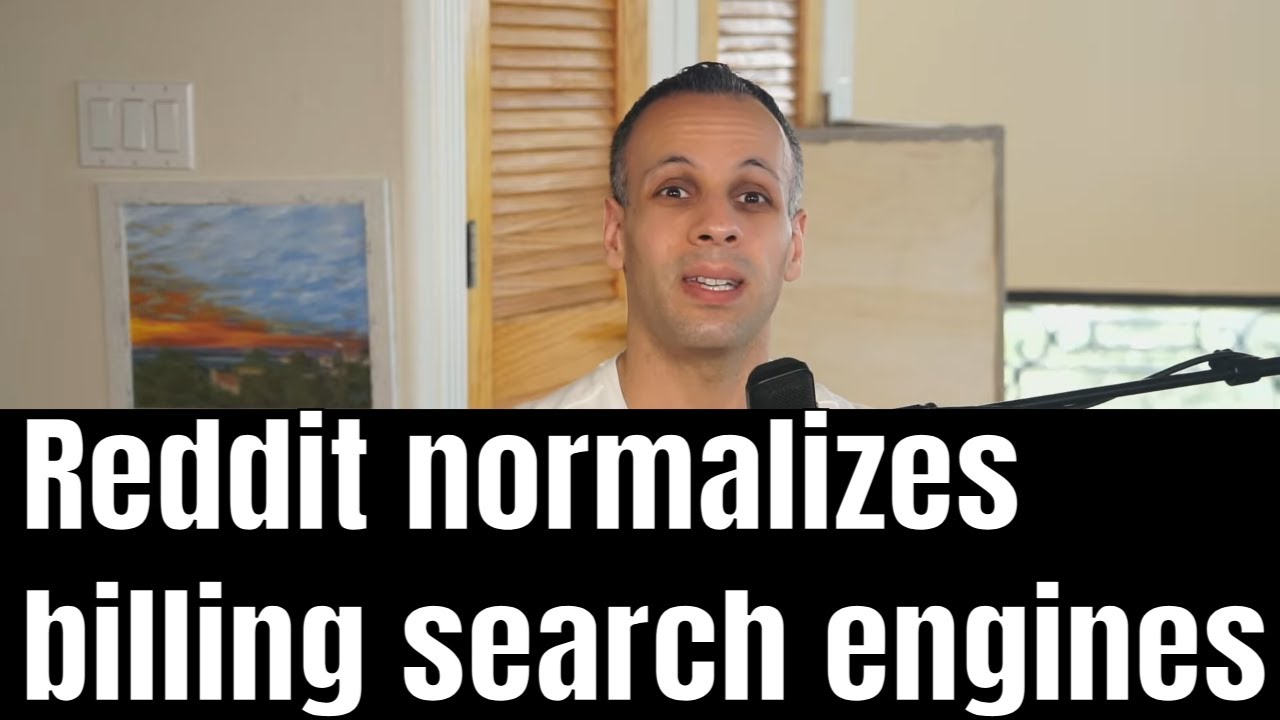



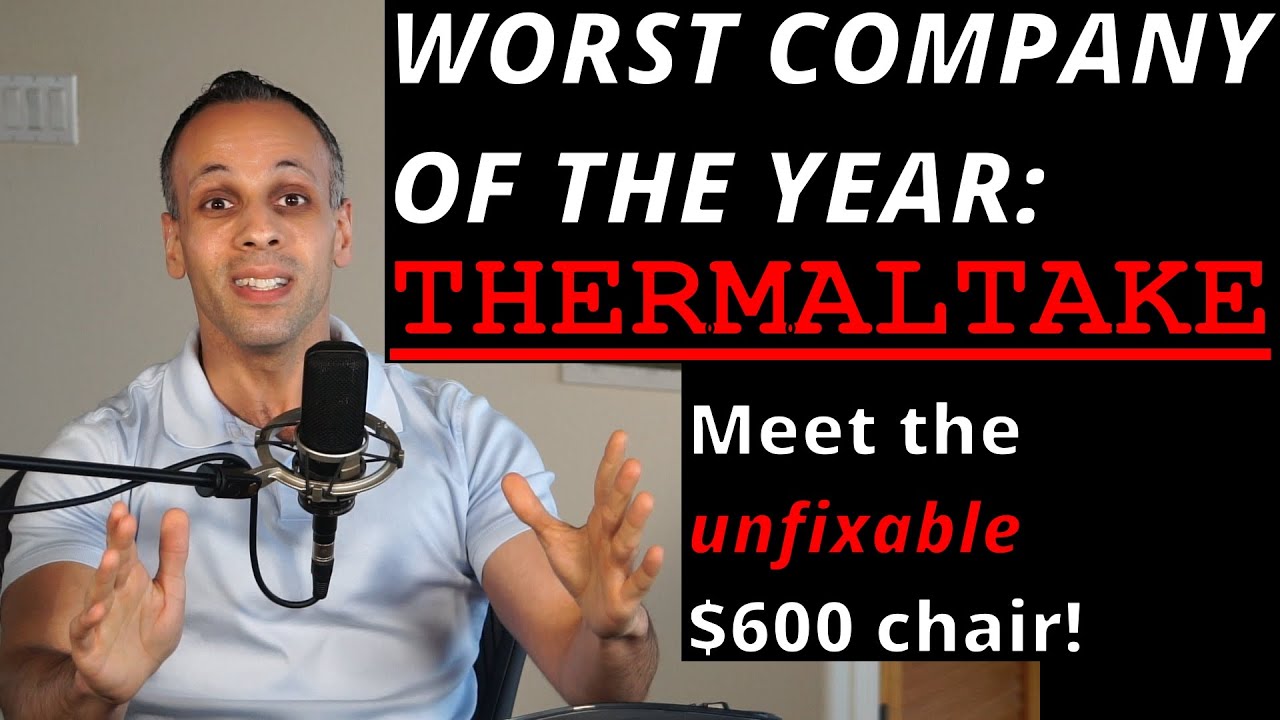






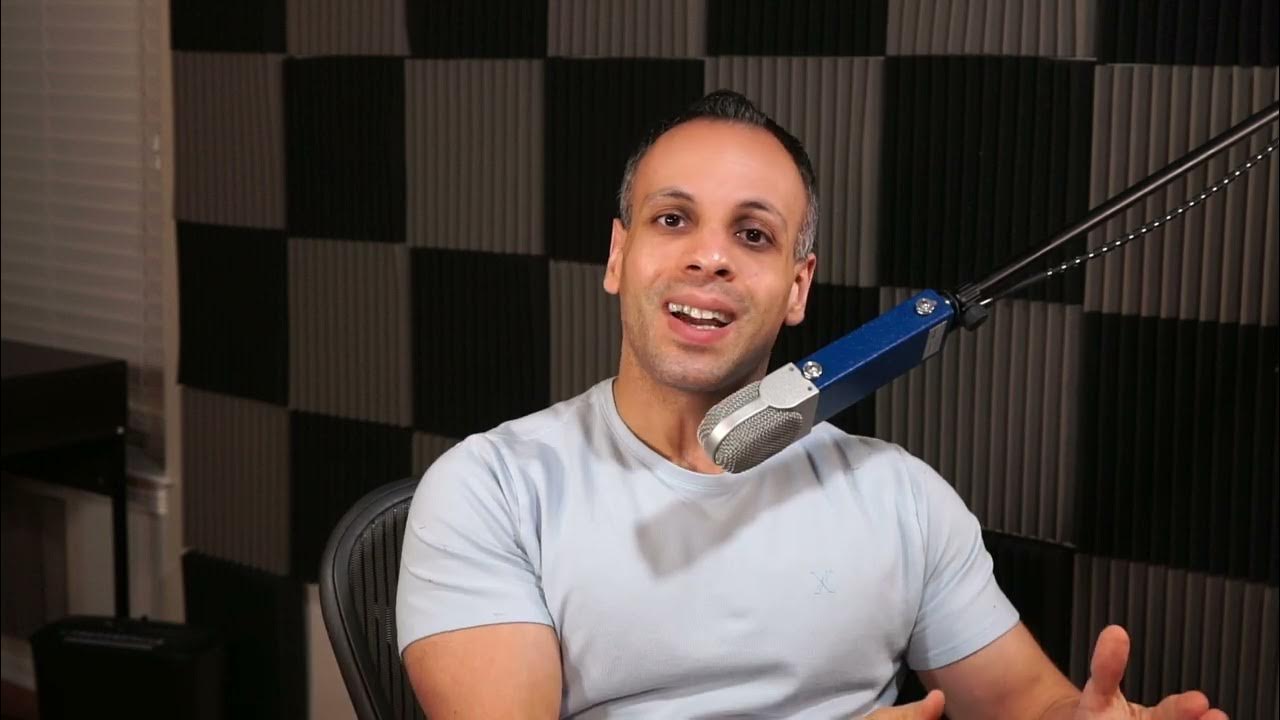
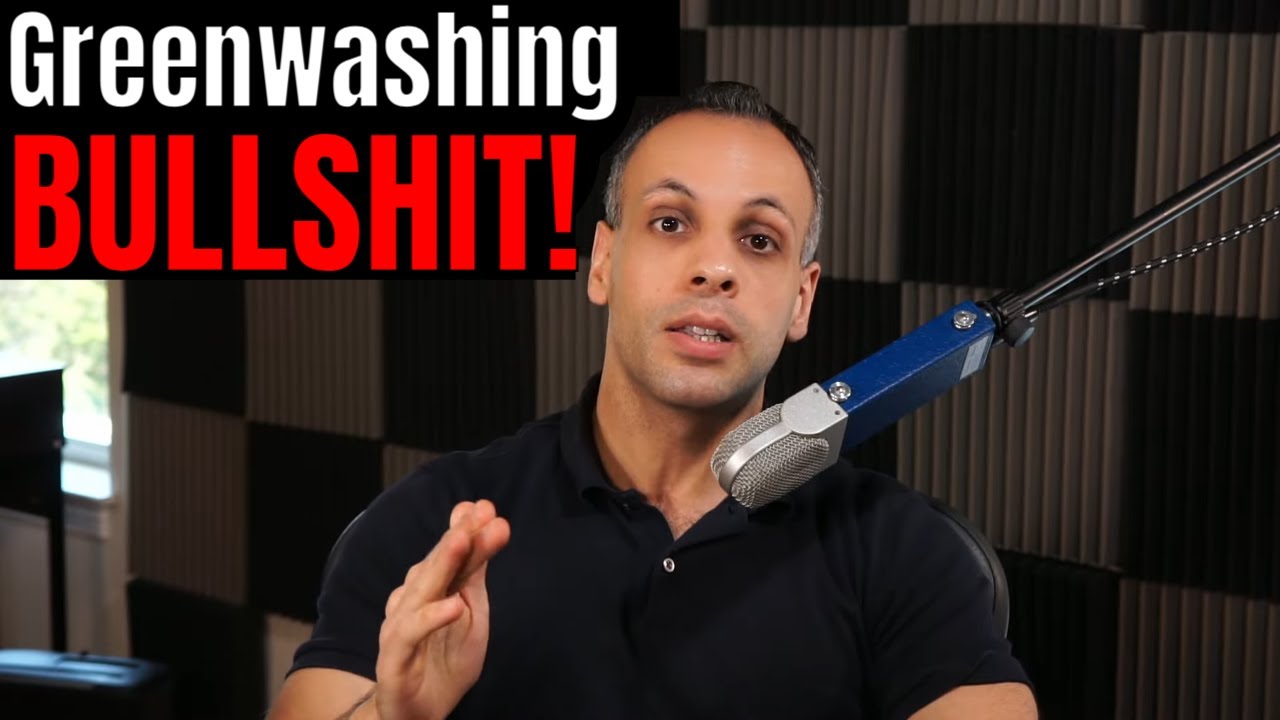
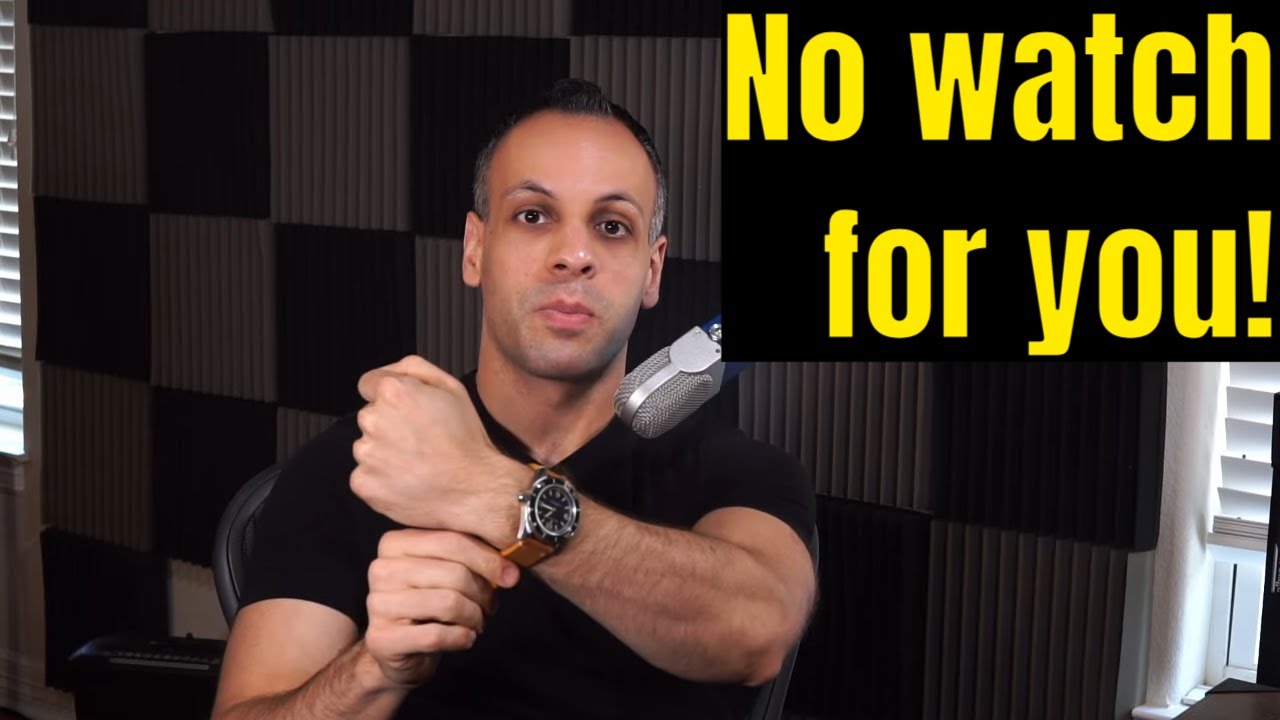


Ah, it seems like a race to the bottom.
But I can’t disagree with you there.